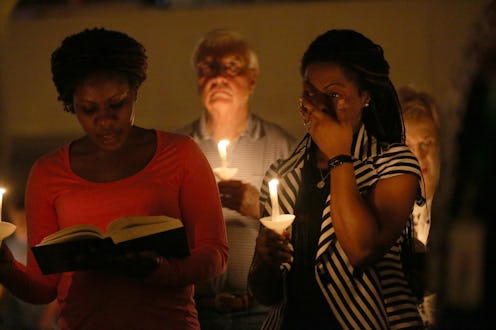
On Sunday morning, a mass shooting at a baptist church in Sutherland Springs, Texas killed at least 26 people. That casualty count makes the shooting one of the deadliest in modern U.S. history, which means that two of America's deadlier shootings have occurred just in the last 35 days. The Harvest Music Festival shooting in Las Vegas, Nevada, which occurred on Oct. 1, killed 58 people.
Sadly, these statistics point to the established notion that mass shootings in America are becoming deadlier and possibly more frequent (though there is some debate on the latter). As CNN noted, of the 30 deadliest shootings in the United States since 1949, 18 of these shootings have occurred in the last 10 years. Moreover, as the Financial Times (FT) reported, the Las Vegas mass shooting marks the third time in a decade that a mass shooting has been considered the deadliest in U.S. history.
As mass shootings in the United States become deadlier, many are trying to pinpoint exactly why this is the case. Some have suggested that the expiration of the assault weapons ban in 2004 has contributed to the increase in casualties during mass shootings, as use of an assault weapon increases the likelihood that a shooting will be much deadlier. Indeed, using a database created by Mother Jones, the Washington Post reported last year that of the 10 mass shooting incidents with the highest number of casualties (which includes people killed and wounded) in the U.S., seven were perpetuated using an assault-style rifle. Moreover, the Post reported in the same article that assault rifles are now becoming mass shooters' "weapon of choice."
However, as a recent article in Politico pointed out, there is limited research on the link between the expiration of the assault weapons ban and the severity of mass shootings — and the research that does exist shows that it has had minimal impact on gun violence in the short-term.
The Financial Times also suggested that something known as the "contagion effect" may be responsible for the increased severity of mass shootings. As FT explained, a 2015 study found that a single mass shooting can increase the likelihood of further mass shootings in the days that follow. FT notes that this "contagion effect" could explain part of the "increase in frequency and severity of U.S. attacks."
Finally, while most Americans support stricter gun control laws, in the wake of mass shootings, many states have actually relaxed their gun control laws. David Frum, senior editor of The Atlantic, described this phenomenon to NPR on Sunday, saying that since the Sandy Hook shooting in 2012, two dozen states have moved to make their gun laws more permissive. The article noted that increased feelings of insecurity following a mass shooting can cause people and politicians to advocate for policies that make guns more accessible to the public, even though public opinion regularly reflects a strong desire for gun regulation.
While a precise link between more permissive state gun laws and increased casualties in mass shootings has not yet been studied, this notion, coupled with easier access to assault weapons, could perhaps contribute to the increasingly deadly nature of mass shootings.
However, as many experts point out, a well-documented cause or causes for this increase in casualties during mass shootings has not yet been established, partially because research related to gun violence is massively under-funded and, resultantly, under-conducted.
As Politico noted, until the United States invests in research to more readily identify the causes of increasingly deadly mass shootings — and to then establish related solutions — these shootings will unfortunately continue to be a reality. Sunday's horrific and deadly shooting at a Texas church is yet another example of why comprehensive research about the causes and prevention of mass gun violence needs to happen right away. And why urgent legislation on gun control that addresses the already-known causes of gun violence needs to be enacted immediately.